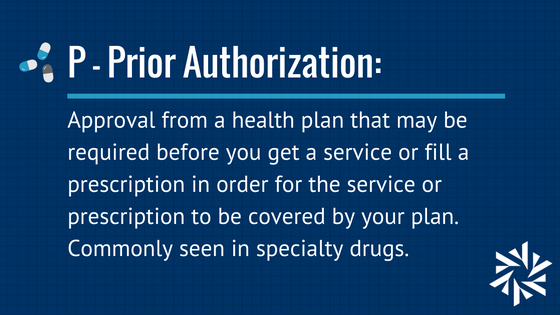
Benefits terminology, especially when it comes to health care, can be overwhelming and confusing. Plan documentation and federal SBCs (Don’t worry, you can find the SBC definition below) contain many pages of information, costs, and limitations and this confusion only grows if you’re trying to choose between multiple plans. At Austin, we create custom materials so employees can read plain language descriptions and real-life examples. Building awareness and confidence helps individuals become better health care consumers.
We’ve provided an expanded glossary of benefit terms below that may help you or one of your employees better understand their benefits.
A – Annual Deductible Combined: Usually in Health Savings Account (HSA) eligible plans, the total amount that family members on a plan must pay out-of-pocket for health care or prescription drugs before the health plan begins to pay.
B – Balance Billing: When a provider bills you for the difference between the provider’s charge and the allowed amount. For example, if the provider’s charge is $100 and the allowed amount is $70, the provider may bill you for the remaining $30. A preferred provider may not balance bill you for covered services.
C – Coordination of Benefits (COB): A way to figure out who pays first when two or more health insurance plans are responsible for paying the same medical claim.
D – Durable Medical Equipment (DME): Equipment and supplies ordered by a health care provider for everyday or extended use. Coverage for DME may include: oxygen equipment, wheelchairs, crutches or blood testing strips for diabetics.
E – Exclusive Provider Organization (EPO) Plan: A managed care plan where services are covered only if you go to doctors, specialists, or hospitals in the plan’s network (except in an emergency).
F – Flexible Spending Account (FSA, Flex Spending): You set aside money for your FSA from your paycheck before taxes are taken out. Then use your pre-tax FSA funds throughout the plan year to pay for eligible health care or dependent care expenses. You save money on expenses you’re already paying for. And depending on how your health FSA plan is set up, you may be able to carry over up to $500 of unused funds to the following plan year.
G – Grace Period: Your Flexible Spending Account plan may include a grace period extension, which can apply to both a health FSA and a dependent care FSA. During this time frame, you may incur eligible FSA expenses and use the funds remaining in your account to cover those expenses. The grace period begins on the first day immediately following the last day of the plan year. In most cases, it ends two months and 15 days later.

H – Habilitative/Habilitation Services: Health care services that help you keep, learn, or improve skills and functioning for daily living. Examples include therapy for a child who isn’t walking or talking at the expected age. These may include physical and occupational therapy, speech-language pathology, and other services for people with disabilities in inpatient and/or outpatient settings.
I – Insured Plan: In an insured group plan, the employer contracts with another organization (insurance carrier) to assume financial responsibility for the costs of enrollees’ medical claims.
J – Job-Based Coverage: Used to describe employer-sponsored plans. Individuals may see this terminology used on the federal marketplace (Healthcare.gov) and federal tax returns.
L – Large group: Definition for employers with more than 100 employees.
M – Medically Necessary: Health care services or supplies needed to diagnose or treat an illness, injury, condition, disease or its symptoms and that meet accepted standards of medicine.
N – Non-covered Charges: Charges for services and supplies that are not covered under the health plan. Examples of non-covered charges may include things like acupuncture, weight loss surgery or marriage counseling. Consult your plan documentation for specific information.
O – Outpatient services: Services that do not need an overnight stay in a hospital. These services are often provided in a doctor’s office, hospital or clinic.
P – Prior Authorization: Approval from a health plan that may be required before you get a service or fill a prescription in order for the service or prescription to be covered by your plan. Commonly seen in specialty drugs.
Q – Qualifying Life Event: A change in your situation — like getting married, having a baby, or losing health coverage — that can make you eligible to change your enrollment mid-plan year. You have 30 days from the date of your qualifying life event to make changes to your coverage.

R – Referral: When you have a managed care plan, like an HMO, a referral from a primary care physician is necessary in order to see a specialist.
S – Summary of Benefits and Coverage (SBC): A federally standardized summary that lets you make comparisons of costs and coverage between health plans. You can compare options based on price, benefits, and other features that may be important to you. You’ll get the SBC when you shop for coverage on your own or through your job, renew or change coverage, or request an SBC from the health insurance company.
T – Third party administrator (TPA): An individual or firm hired by an employer to handle claims processing, pay providers, and manage other functions related to the operation of health insurance. The TPA is not the policyholder or the insurer.
U – UCR (Usual, Customary, and Reasonable): The amount paid for a medical service in a geographic area based on what providers in the area usually charge for the same or similar medical service. The UCR amount sometimes is used to determine the allowed amount.
V- Voluntary Benefits: Products such as life, disability, critical-illness and legal services that are offered through an employer but paid for partially or solely by workers through payroll deduction. Employees are able to choose whether or not to participate based on their particular circumstances.
W – Waiting Period (employer-sponsored coverage): The time that must pass before coverage can become effective for an employee or dependent who is otherwise eligible for coverage under a group health plan.
X – X-ray: This is a picture that can show bones and other internal parts of the body. It is used to help diagnose certain conditions. X-ray and other types of imaging and diagnostics have different costs between plans and providers. Review your plan documents and shop providers to take control of your health care dollars.

Do you want to find out more about Austin’s personalized and plain language employee communication materials? Contact us today to see how we can help you empower your employees to be better health care consumers.


